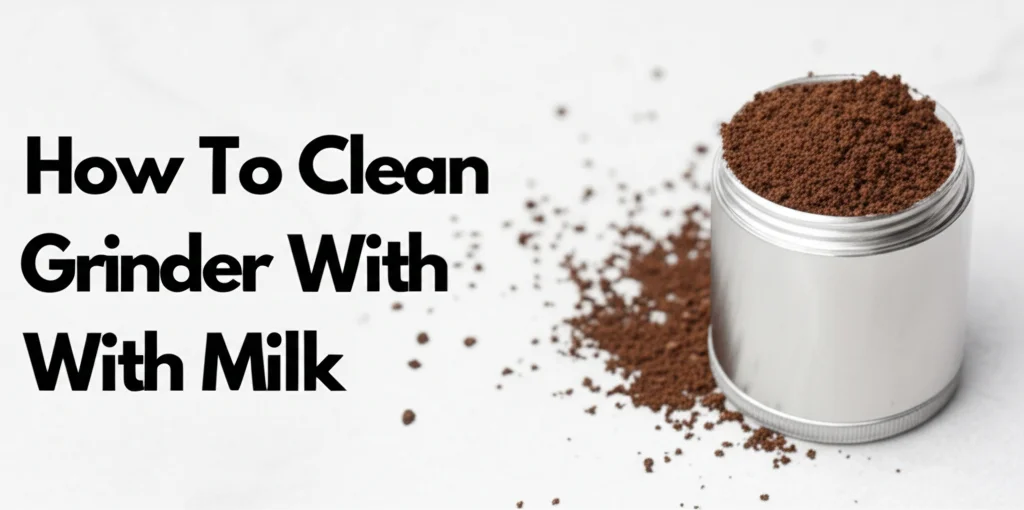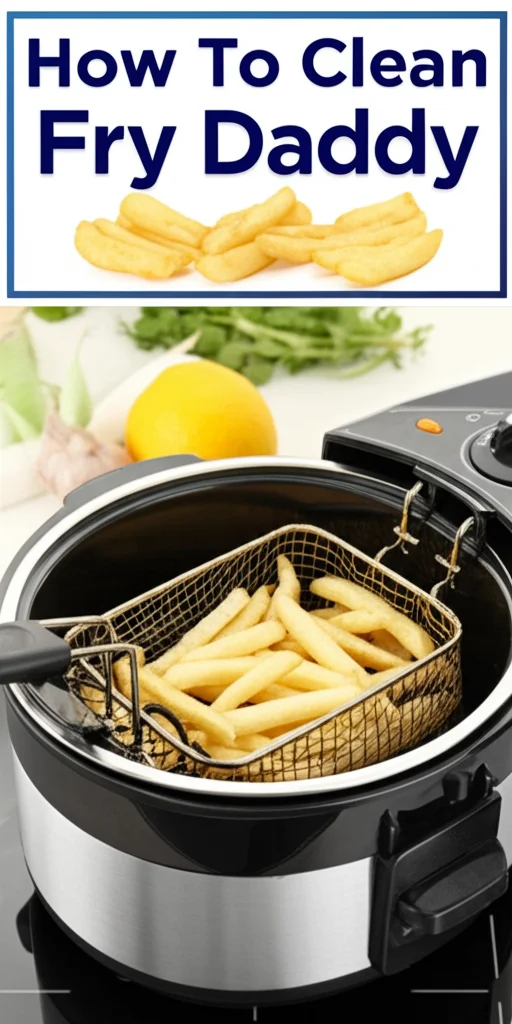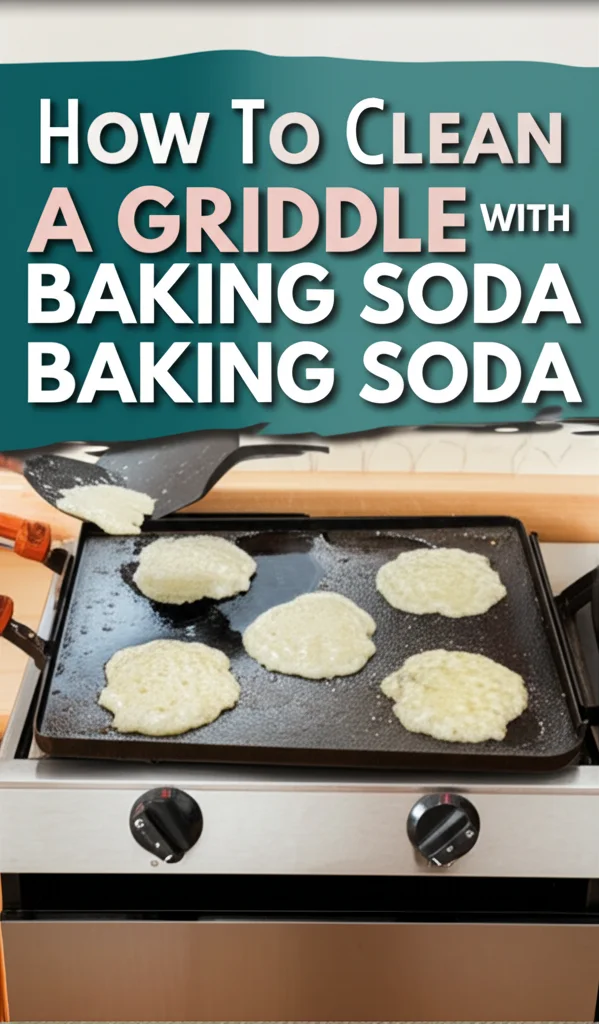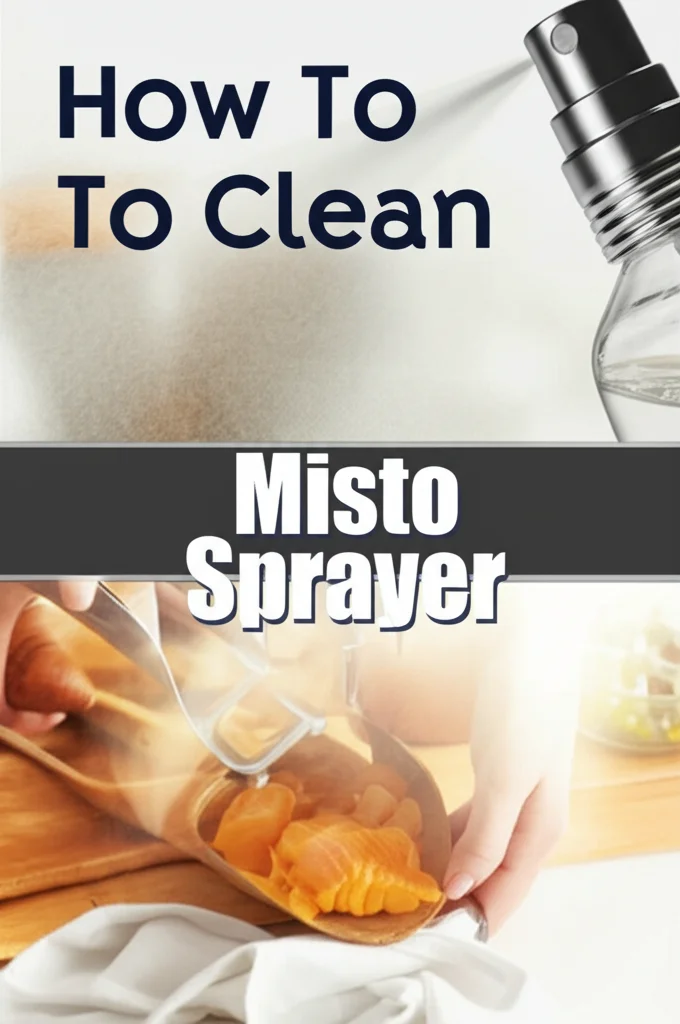· Kitchen Cleaning · 6 min read
How To Clean Grinder With Milk

How To Clean Your Coffee Grinder After Milk-Based Drinks
Have you recently experimented with lattes, cappuccinos, or other milk-based coffee drinks? If so, you might be wondering how to clean your coffee grinder effectively after dealing with milk residue. Milk, unlike coffee beans, leaves behind a sticky, potentially rancid mess that can affect the flavor of your future brews. This article will guide you through the process of cleaning your grinder after milk exposure, ensuring it stays in top condition. We’ll cover everything from immediate steps to deep cleaning methods, keeping your coffee tasting its best.
Takeaway:
- Clean your grinder immediately after using it with milk-based ingredients.
- Use rice as a natural abrasive to dislodge stuck-on residue.
- Thoroughly vacuum and wipe down all grinder components.
- Regular cleaning prevents buildup and maintains grinder performance.
Can you clean a coffee grinder with milk residue?
Yes, you can! Cleaning a coffee grinder with milk residue requires a bit more effort than cleaning after coffee beans, but it’s entirely achievable. The key is to act quickly and use methods that effectively remove the sticky, protein-rich residue before it hardens and impacts the grinder’s performance and the taste of your coffee.
Why Cleaning a Milk-Soaked Grinder is Crucial
Let’s face it, nobody wants their morning coffee tasting like yesterday’s latte. Milk residue left in your grinder can quickly become a breeding ground for bacteria and mold. This not only affects the flavor of your coffee but can also pose a health risk. Furthermore, hardened milk can gum up the grinder’s burrs, reducing its efficiency and potentially damaging the motor. Regular cleaning is therefore essential for both taste and longevity. Ignoring this step can lead to unpleasant odors and a significantly diminished coffee experience.
Immediate Action: The First Steps
The moment you finish grinding milk-infused ingredients, take action. Don’t wait until later! First, unplug the grinder from the power source for safety. Then, disassemble as much of the grinder as possible, including the hopper, burrs (if removable), and any other detachable parts. Empty any remaining grounds or milk powder. A quick wipe-down with a dry cloth can remove some of the initial residue. This proactive approach makes the deeper cleaning process much easier.
The Rice Method: A Natural Cleaning Solution
Rice is a surprisingly effective and natural way to clean a coffee grinder after milk exposure. Here’s how it works: Pour about ¼ cup of uncooked white rice into the grinder. Grind the rice on the finest setting for about 30-60 seconds. The rice acts as a gentle abrasive, dislodging stuck-on milk residue from the burrs and interior of the grinder. After grinding, empty the rice and any remaining debris. You’ll likely notice the rice is coated in a milky residue – proof that it’s working! This method is particularly good for getting into hard-to-reach areas.
Vacuuming and Wiping Down Components
After using the rice method, it’s time to vacuum. Use a small brush attachment to thoroughly vacuum the grinder’s interior, removing any remaining rice particles and milk residue. Pay close attention to the burrs and any crevices. Next, take a slightly damp (not wet!) microfiber cloth and wipe down all removable parts. For stubborn residue, you can add a tiny drop of mild dish soap to the cloth. Avoid getting any liquid directly into the motor housing. Ensure all parts are completely dry before reassembling. If you’re looking for more ways to keep your kitchen clean, check out https://www.beacleaner.com/how-to-clean-kitchen-mats/ for helpful tips.
Deep Cleaning: When Rice Isn’t Enough
Sometimes, milk residue can harden and become particularly difficult to remove. In these cases, a more thorough deep cleaning is necessary. Start by disassembling the grinder completely, as described earlier. For the burrs, you can use a soft brush (like an old toothbrush) and a small amount of warm water to gently scrub away any remaining residue. Avoid harsh chemicals or abrasive cleaners, as these can damage the burrs. For the hopper and other plastic parts, you can wash them with warm, soapy water. Rinse thoroughly and allow all parts to air dry completely before reassembling. Remember, a clean kitchen is a happy kitchen, and you can find more cleaning advice at https://www.beacleaner.com/how-to-clean-kitchen-cabinet-hardware/.
Cleaning the Grinder Burrs
The burrs are the heart of your grinder, so extra care is needed. Remove them carefully, following your grinder’s instructions. Use a soft brush and warm water to gently scrub away any stuck-on residue. Avoid using metal tools, as these can scratch the burrs. Ensure the burrs are completely dry before reassembling. Proper burr maintenance is crucial for consistent grind size and optimal coffee flavor.
Addressing the Hopper and Chute
The hopper and chute are often overlooked, but they can harbor significant amounts of milk residue. Wash these parts with warm, soapy water, paying attention to any corners or crevices. Rinse thoroughly and allow to air dry. A clean hopper and chute ensure that only fresh ingredients enter your grinder.
Preventing Future Milk Residue Buildup
Prevention is always better than cure. To minimize milk residue buildup, consider dedicating a separate grinder specifically for milk-based drinks. If you only have one grinder, make it a habit to thoroughly clean it immediately after each use with milk. You can also try using a small amount of coffee beans after grinding milk-infused ingredients to help absorb any remaining residue. This helps to neutralize any lingering flavors and keeps your grinder fresh. For more tips on maintaining a clean kitchen, explore https://www.beacleaner.com/how-to-clean-stainless-steel-sink-paint-stains/.
FAQ: Common Questions About Cleaning Grinders with Milk
Q: Can I use water to clean my coffee grinder?
A: Yes, but use water sparingly. Too much water can damage the motor and cause rust. Always ensure all parts are completely dry before reassembling. A damp cloth is usually sufficient for most cleaning tasks.
Q: What if the milk residue is really stuck on?
A: Try soaking the affected parts in warm, soapy water for 15-30 minutes before scrubbing. You can also repeat the rice method multiple times.
Q: How often should I deep clean my grinder?
A: If you frequently use milk-based drinks, deep clean your grinder every 1-2 weeks. If you only use it occasionally, a deep clean every month or two should suffice.
Q: Can I use vinegar to clean my grinder?
A: While vinegar is a good cleaner, it’s best to avoid using it in your coffee grinder. The strong smell and taste can linger and affect your coffee.
Conclusion: Maintaining a Fresh Grind
Cleaning your coffee grinder after using it with milk is a vital step in maintaining its performance and ensuring the quality of your coffee. By following these simple steps – from immediate action to deep cleaning methods – you can prevent residue buildup, eliminate unpleasant odors, and enjoy consistently delicious brews. Remember, a clean grinder is a happy grinder, and a happy grinder makes for a happy coffee drinker! Don’t let milk residue ruin your coffee experience; take the time to clean your grinder properly. For more cleaning solutions around the house, take a look at https://www.beacleaner.com/how-to-clean-burnt-sugar-off-stovetop/.




